A Journey Through Oman's Architectural Heritage Blog
Explore Oman’s rich architectural legacy, from ancient forts and mud-brick villages to modern Islamic design. Discover the stories behind Nizwa Fort, Bahla’s UNESCO-listed oasis, and Muscat’s contemporary marvels. Dive into this blog to know about the history.
Ar.Zhanaz J Fathima
8/26/20243 min read


Let's embark on a journey to explore these regional gems:
Muscat-Muttrah: Beating the Heat by the Sea
Nestled along the coast, Muscat-Muttrah is a maze of closely packed houses.
Here, the scorching sun and hot summers are countered by the clever use of thick limestone walls.
These walls act as thermal insulators, keeping the interiors cool. But that's not all!
Windows are strategically placed to capture the refreshing sea breezes, ensuring natural ventilation.
To further combat the heat, intricate latticework windows are incorporated in the upper parts of the houses.
These beauties not only allow air circulation but also provide a layer of privacy and block harsh sunlight.
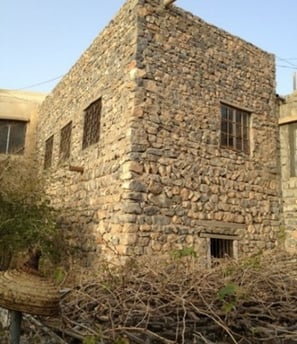

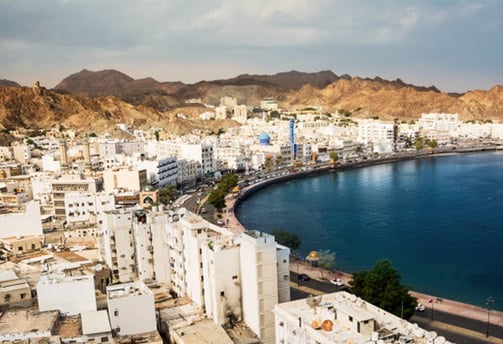

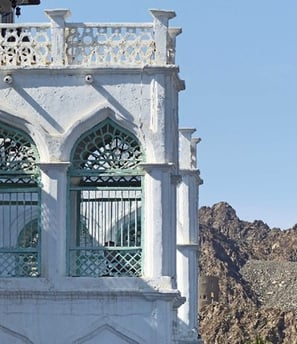

Heritage Structure
Geography of Oman
Nizwa: A Tale of Security and Social Order
Stepping inland, we arrive at Nizwa, an ancient city steeped in history.
Security was paramount here, with houses clustered around the fort for protection.
Social hierarchy also played a role in the layout.
Wealthier residents enjoyed the comfort of houses located near water sources and lush gardens, while the dwellings of less fortunate folks were situated on higher ground.
Mud bricks and stones were the building materials of choice, offering a sturdy and readily available solution.
View of Muttrah
Latticework windows
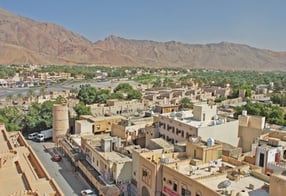

View of Nizwa
Sur: Where Dhows Meet Exquisite Woodwork
As we travel further down the coast, we reach Sur, a city known for its dhows (traditional boats).
Here, the climate is unforgiving, with both high temperatures and humidity throughout the year.
To combat this, the people of Sur have mastered the art of building with limestone.
These sturdy houses provide excellent insulation, keeping the interiors cool in the summer and warm in the winter.
Sur also boasts some of the most exquisite examples of Omani woodwork, with intricate designs adorning doors and windows.
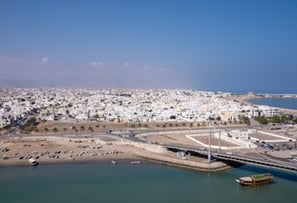

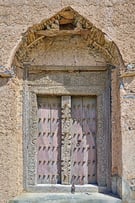

View of Sur
Omani Woodwork
Salalah: A Duality of Climate, A Duality of Homes
Finally, we arrive at the verdant plains of Salalah, a region blessed with a monsoonal climate.
Summers can be hot, but unlike other parts of Oman, winters bring a pleasant respite.
Here, we find two distinct house styles:
a)Arish houses: These charming huts are built using fronds from the coconut palm. They are perfect for the hot summers, allowing for excellent air circulation and offering a cool retreat.
b)Limestone houses: These more permanent dwellings are the domain of wealthier residents and merchants. Built with locally sourced limestone, they provide year-round comfort. Interestingly, many Salalah houses feature a large south-facing yard, strategically placed to maximize cool breezes and allow air to flow through the house.
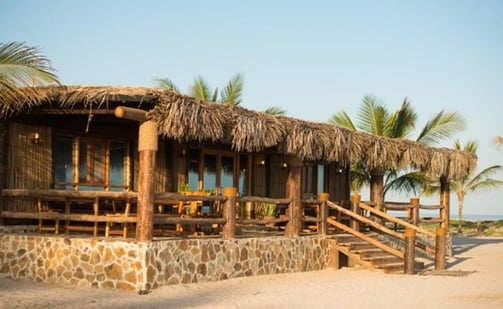

Arish Houses
Conclusion
Oman's traditional Architecture exemplifies a deep understanding and respect for the environment.
Local craftsmen used readily available natural materials and incorporated ingenious design elements to create comfortable and functional homes that thrived in sometimes harsh climates.
So, next time you look at a building, remember, it's not just bricks and mortar, it's a story waiting to be told.
CuMinds Creative Solutions
Crafting spaces that reflect your unique story.
Connect with us
Design with us
support@cumindscr.com
+91 9894510031
© 2025. All rights reserved.
